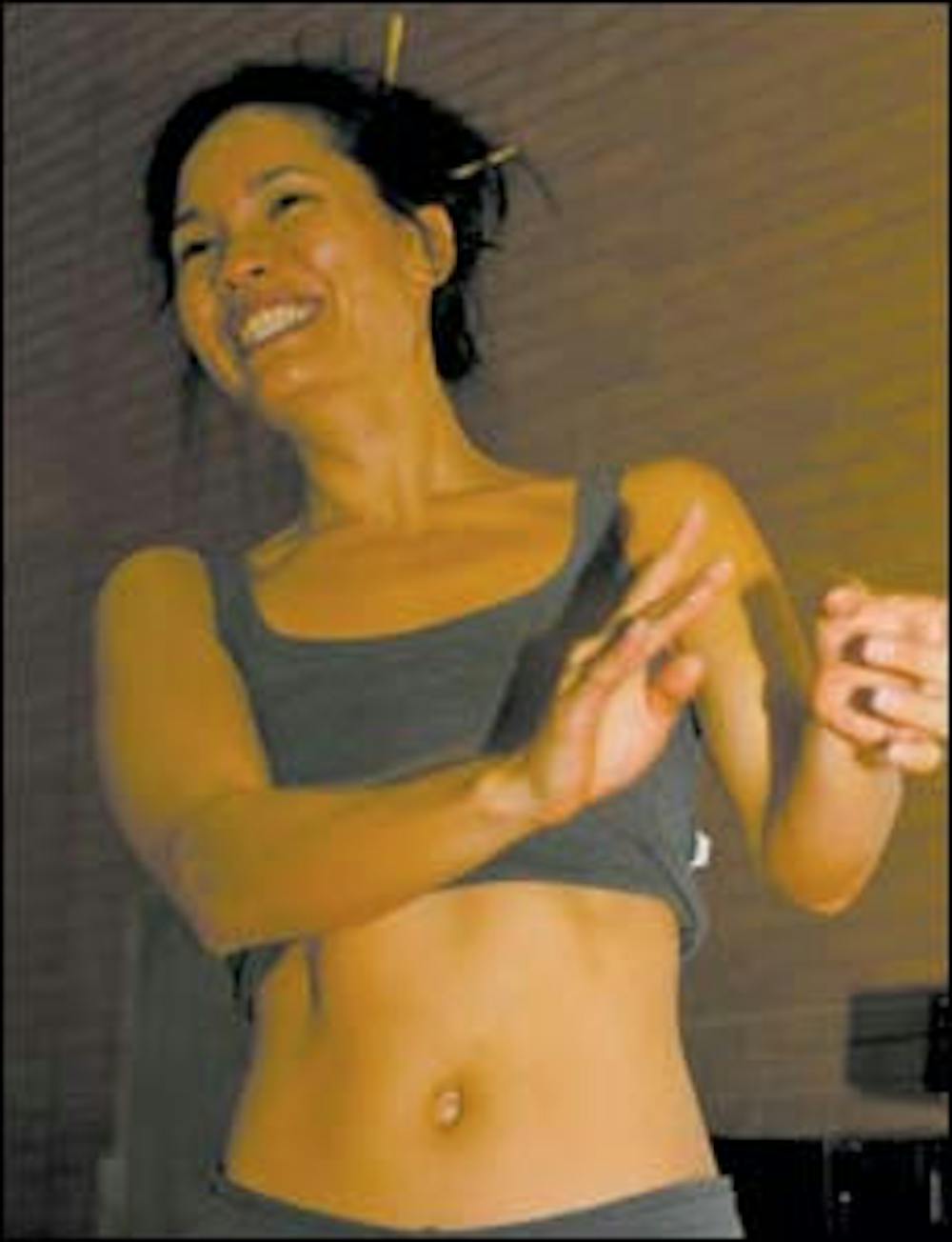The soft, rhythmic sounds of Arabic music fill the room. Students arrange themselves about the floor, stretching and chatting while they get ready.
It's Thursday night, and this is ASU's first and only belly dancing class.
Ava Fleming, the instructor, takes her place at the front. She is wearing gray stretch pants and a matching sport top with a shimmery pink scarf tied around her hips. The sounds of tap-dance practice next door rattle through the room.
As Fleming begins leading the class in a warm-up, late students hurry in, sliding out of their sandals and tying scarves around their waists before falling into line.
Belly dancing, really a misnomer for varietals of traditional Middle Eastern dance, has grown in popularity recently. It is being taught in community centers and dance studios all over the Valley, and this semester, it's being taught at ASU for the first time.
Usually about 20 students show up to class, which was completely full well before the semester started. Fleming says she had tons of students begging for overrides.
Pre-med freshman Megan Pendergest decided to take the class because of its exciting, exotic nature.
"We always like to dance at parties, and so I wanted to try it. It's something new," she says.
Unfortunately for Pendergest, her left foot is in a cast and she has had to sit out the last few weeks of class, taking notes on the sidelines while her classmates undulate and shimmy to the music.
Fleming says she fell in love with belly dancing the first time she saw a belly dancer perform.
"She was so graceful and elegant, and so, so beautiful," she says. "I thought, 'I could do that.' "
That was about 10 years ago. Fleming has been dancing ever since.
Fleming dances and teaches the cabaret style of belly dancing, which is primarily choreographed and usually performed solo.
"When people hear 'cabaret,' they think 'strippers,' but if they are watching something like that, then they are not watching art," she says. "In belly dance, your body and you are an expression of the music. You need to feel it in your heart. It's not about how good you are or how fancy your moves are; it's about interpreting the music."
Fleming won the Belly Dancer of the Universe competition in 2004. She swept all three categories at the Los Angeles contest -- the people's choice, the judge's champion and miss congeniality. She also teaches at Domba! Studio in Tempe.
Rose Clay is a biology senior at ASU. She has taken various dance classes all her life but focused on Middle Eastern dance this year. She has been going to weekly lessons with her instructor, Samia, since August.
"Belly dance is spiritual," Clay says. "It's a total religious experience when it captures the cultural and historical aspects. The style is nomadic. You can dance anywhere."
Unlike Fleming, Clay is more interested in the tribal style of belly dance. Tribal style is practiced in a group, rather than solo, and is not choreographed. The leader of the group uses hand cues to let her dancers know what move is next.
"It is mesmerizing to see a troop move in synchrony to the deep beats of the drum," she says.
Clay says she is in awe of Middle Eastern culture and loves what belly dancers in the United States do today.
"The practice is not as prevalent today where it originated due to religion and war," she says. "Luckily, it has spread to surrounding areas and to America. I am glad to help keep the spirit alive."
In the ASU class, a gym full of female students is practicing a choreographed dance. They start facing forward and spin slowly, waving their arms gracefully with the beginning chords of the song.
As the music picks up in speed and intensity, the students twirl and shimmy to the beat, their hip scarves accentuating each shake and belly roll. In the front, Fleming leads the group, her body moving with grace and impeccable control to the passionate strains of the Arabic music.
Reach the reporter at katherine.kelberlau@asu.edu.




